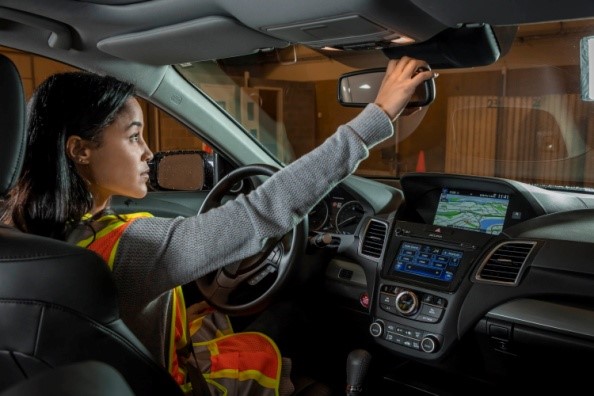Back in the saddle: Driving after a break

There is a common saying that “once you learn how to ride a bike, you never forget.” That may be true, but you can get rusty. Driving is no different. Like any learned skill, your driving skills can fade without practice.
If you or your employees are going back to driving after a break, here are some tips on how to do it safely.
Consider what has changed since the employee last drove. Will they be driving different routes, a different type of vehicle, or on a different schedule? Will there be more or less traffic? In addition to obvious changes at your work, changes your customers or clients face may also have an impact. Ask others when you think about this question because they may have additional information. Even if nothing has changed, it may still be worthwhile to take the employee through an orientation to remind them about the basics.
Start with a review of skills. This might involve a ride-along, in-person assessment or a virtual assessment. Road Safety at Work offers a free assessment guide and an accompanying printable form or a fillable form that you can download.
Re-train if necessary. The assessment results or the changes that have happened may be reason enough to have employees take re-training. Re-training can cover not only driving, but other practices related to driving such as vehicle cleaning.
Consciously supervise. Supervisors and manages should be alert to any risky behaviours and act as necessary. Staff who are returning to driving or returning to work in general may be nervous or unsure of themselves. Their minds may not be entirely on work when they are behind the wheel. Talk to your employees so you know what’s going on with them and set realistic goals.
Make adjustments for employees as necessary and if possible. Until employees are fully comfortable with driving again, you may want to gradually expose them to driving. This may mean shorter trips or scheduling them to drive at less busy times or on less busy roads. If they’re not driving their own vehicle, you may want to assign them to one they have experience with and are comfortable with.
Prepare vehicles. If a vehicle has been sitting for a few weeks, there are a few things that should be done before anyone drives it, like the following:
- Check the tire pressures, all fluids (motor and transmission oils, power steering and brake fluids, coolant, washer fluids), lights, and windshield wipers.
- Look under the vehicle for spots that might suggest a leak. If you spot something, get it checked out and fixed.
- Inspect the emergency and first aid kit to see whether anything needs to be added or replaced.
- If a vehicle has been sitting for some time, you may want to top it up with fresh fuel.
For a full list, check out these vehicle inspection forms.
Offer employees reminders. Even though some of these tips may seem obvious, as employees return to driving for work, it’s worth reminding them about the following:
- Know where everything is in your vehicle. Drivers should be completely familiar with the vehicle they use. This includes knowing where all the controls are and how to operate them. Get to know where the switches are before getting underway.
- Avoid unnecessary distractions. Silence can improve our concentration, so don’t turn on the radio or engage in unnecessary conversation while getting used to driving again.
- Plan your journey or your route. Knowing where you’re going and how you plan to get there will help you be ready. Planning will also mean you can deliberately avoid difficult driving areas or situations. Remember to tell your supervisor about them so they can share this information with your co-workers.
- Take a break. Even if you’re not driving for a long time, you may still benefit from a stop or two along the way to relieve the stress.
- Be patient with yourself. It can take time to rebuild confidence and feel comfortable doing something you’ve stopped doing for awhile. Being nervous is normal and will help to keep you alert.
- Ask for help. Even if you’ve taken all the steps to get comfortable with driving again, if you think you could use extra training, time or support, ask your supervisor or manager for the help you think you need.
Taking the time and being thoughtful about getting back behind the wheel are investments worth making for you, your employees, and all other road users.